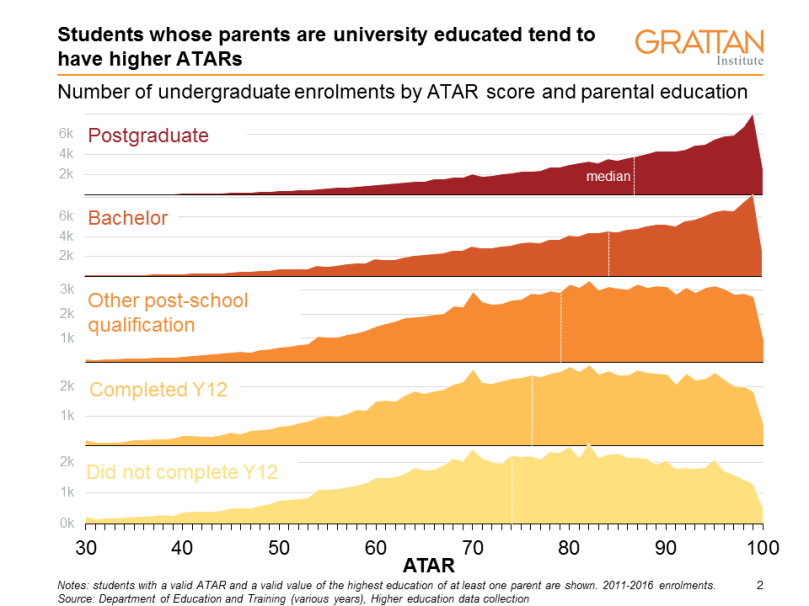In an earlier post, I argued that higher education has substantial inequality-generating features. This post is the first in a series looking at how well Australia’s higher education system does in this context, starting with access to higher education. Essentially, this is about how well the higher education system can foster social mobility.
The potential of the Australia’s higher education system is constrained by the potential pool of students, which largely comes from people who have successfully completed school. Before the 1980s, that was a minority of the population. Don Anderson and A.E Vervoorn’s interesting book Access to privilege reports that in 1980 overall school retention to Year 12 was only 34.5 per cent, and 28.4 per cent at government schools. It was already a massive 88 per cent at the non-Catholic private schools, favoured by many higher SES families. They were setting up the basis for the next generation’s educational success.
In the 1980s, school completion rates increased, so that about half of low SES students finished school by the end of the decade. Low SES Year 12 completion is now at 73 per cent, compared to 80 per cent for high SES students (with the caveat that dividing the population into three groups misses likely much larger difference in the lowest and highest deciles).
ATAR results by SES are rarely published, but some Victorian data I published in a book chapter a few years ago shows the highest SES quartile by postcode substantially over-represented in the 90+ group, and the lowest SES quartile substantially over-represented in the below 50 group.
University enrolment data by definition doesn’t include Year 12 students who never apply, but we know that almost all high-ATAR school leavers put in an application. Using a parental education measure of low SES, we can see in the chart below that there are many more students with an ATAR reporting parents with a higher education qualification than we would predict based on the education levels of people old enough to be parents of undergraduates (notice the different scales).
Further, when one or both parents have degrees (the chart shows the parent with the highest qualification, but frequently both parents have degrees) the ATARs skew more markedly to the higher end, producing higher medians.

The annual NAPLAN reports show that, again, the high SES students, whether measured by parental occupation or parental education, do significantly better across all the literacy and numeracy tests, although consistent with meritocratic hopes there are – as the enrolment data also suggests – high achievers from disadvantaged backgrounds. So even though Year 12 completion has improved, we still have substantial issues with inequality of school-level academic achievement.
I don’t feel competent to judge to what extent university education faculties are to blame for this situation – although the early childhood research suggests that schools, also, are working within the constraints of the student pool. I will assess universities and higher education policy on how they deal with this academic achievement situation as they find it.
From the earliest days, universities and higher education policy (which was originally a State responsibility) have been concerned with access, offering students subsidies and scholarships. But that really only mattered in the post-WW2 era, since very few people before then went to university and it was not needed for most jobs. Hannah Forsyth has written about university admission policies in the post-war era. The Commonwealth government offered merit-based scholarships.Read More »